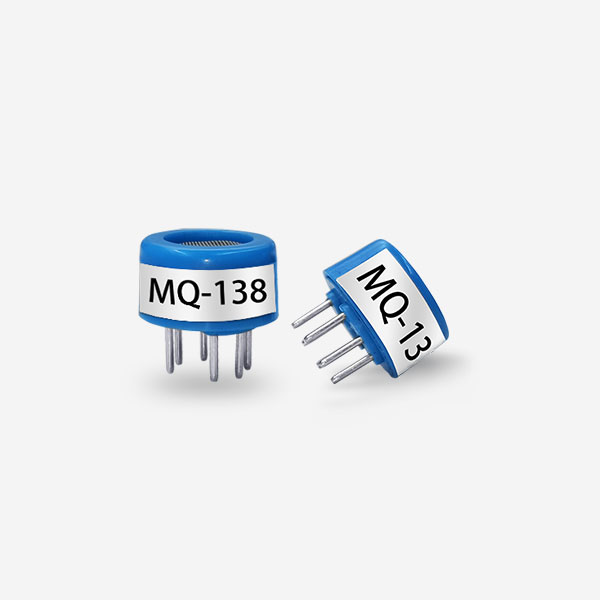Air pollution is a global environmental concern that poses significant risks to human health and the environment. To effectively address this issue, accurate air quality monitoring systems are essential. Gas sensor technology has played a pivotal role in enhancing air quality monitoring by detecting and measuring various pollutants. In recent years, advancements in gas sensor technology have revolutionized the field, leading to more sensitive, selective, and cost-effective sensors. This article explores the key advancements in gas sensor technology and their impact on air quality monitoring, highlighting the potential for a healthier environment.

- Miniaturization and Portability
One significant advancement in gas sensor technology is the miniaturization and portability of sensors. Traditionally, air quality monitoring systems were bulky and required specialized laboratories for analysis. However, recent developments in gas sensor technology have led to the development of compact, lightweight sensors that can be easily integrated into portable devices.
These portable sensors enable real-time monitoring of air quality in various environments such as homes, offices, and outdoor locations. Their small size allows for easy deployment in multiple locations, providing a comprehensive view of air pollution levels. This advancement has significantly expanded access to air quality monitoring, empowering individuals and communities to take informed actions to protect their health.
- Selectivity and Sensitivity
Accurate identification and quantification of specific pollutants are crucial for effective air quality monitoring. Advancements in gas sensor technology have improved the selectivity and sensitivity of sensors, enabling more precise detection and measurement of target gases. Traditional gas sensors often suffered from cross-sensitivity, where they would respond to multiple gases, leading to inaccurate results.
Newer gas sensor technologies, such as metal oxide-based sensors and electrochemical sensors, offer higher selectivity to specific gases. These sensors employ innovative materials and designs to enhance their sensitivity, allowing for precise measurements even at low concentrations. The improved selectivity and sensitivity of gas sensors enable accurate identification of pollutant sources and facilitate targeted mitigation efforts.
- Internet of Things (IoT) Integration
The integration of gas sensor technology with the Internet of Things (IoT) has revolutionized air quality monitoring systems. IoT-enabled gas sensors can connect to wireless networks, allowing for real-time data transmission and remote monitoring. These interconnected sensors create extensive monitoring networks that provide comprehensive coverage of air quality in large areas.
By combining data from multiple sensors, IoT-based systems can generate high-resolution pollution maps, identify pollution hotspots, and track pollutant dispersion patterns. This information is invaluable for urban planning, traffic management, and policy-making to mitigate air pollution effectively. Furthermore, IoT integration enables seamless data sharing, empowering researchers and policymakers to collaborate and develop evidence-based strategies for improving air quality.
- Low-Cost Sensors
Cost has been a significant barrier to widespread adoption of air quality monitoring systems. Traditional gas sensors were often expensive, limiting their deployment in developing countries and low-income communities. However, advancements in gas sensor technology have resulted in the development of low-cost sensors that are more accessible and affordable.
These low-cost sensors utilize innovative manufacturing techniques, such as printable electronics and microfabrication, to reduce production costs significantly. Although they may not match the accuracy and precision of high-end sensors, they still offer valuable insights into air quality trends and can serve as early warning systems for potential health risks. The affordability of these sensors has democratized air quality monitoring, allowing for broader participation and engagement in environmental protection efforts.
- Multigas Detection
Air pollution is a complex mixture of various gases and particulate matter. Advancements in gas sensor technology have led to the development of multigas detection sensors capable of simultaneously measuring multiple pollutants. These sensors employ advanced detection techniques, such as optical sensing, spectroscopy, and chemical sensors array, to identify and quantify different gases in real-time.
Multigas detection sensors enable comprehensive monitoring of air pollution, providing a holistic understanding of the composition and sources of pollutants. This information allows for targeted mitigation strategies and source apportionment studies, leading to more effective pollution control measures. The ability to detect multiple gases with a single sensor reduces the need for expensive and space-consuming sensor arrays, making air quality monitoring more efficient and cost-effective.

Conclusion
Advancements in gas sensor technology have significantly enhanced air quality monitoring, enabling more accurate detection and measurement of pollutants. Miniaturization and portability have made air quality monitoring accessible to individuals and communities, empowering them to take proactive measures to protect their health. Improved selectivity and sensitivity of sensors ensure precise identification of specific pollutants, facilitating targeted mitigation efforts. IoT integration has created extensive monitoring networks, generating valuable data for urban planning and policy-making. Low-cost sensors have democratized air quality monitoring, fostering broader participation in environmental protection. Multigas detection sensors offer comprehensive monitoring capabilities, enabling a holistic understanding of air pollution. As gas sensor technology continues to advance, it holds immense potential for creating a healthier environment by enabling effective air pollution control and promoting sustainable development.
 : +86 155 8830 2704
: +86 155 8830 2704 : jxdziot@gmail.com
: jxdziot@gmail.com
